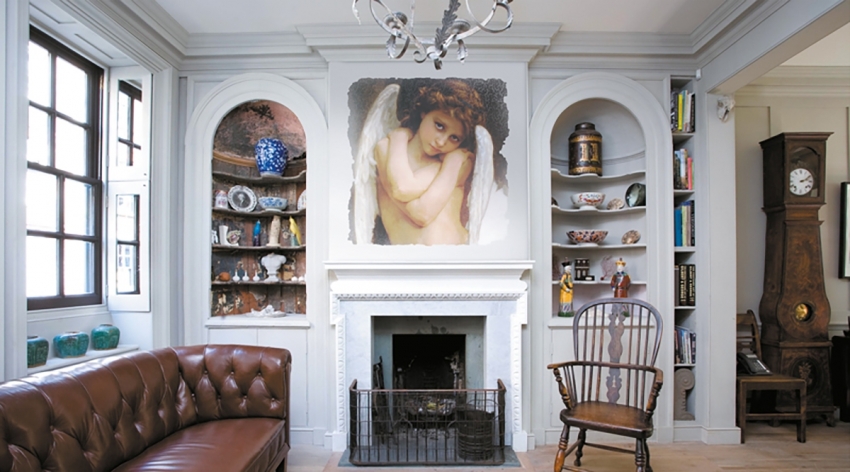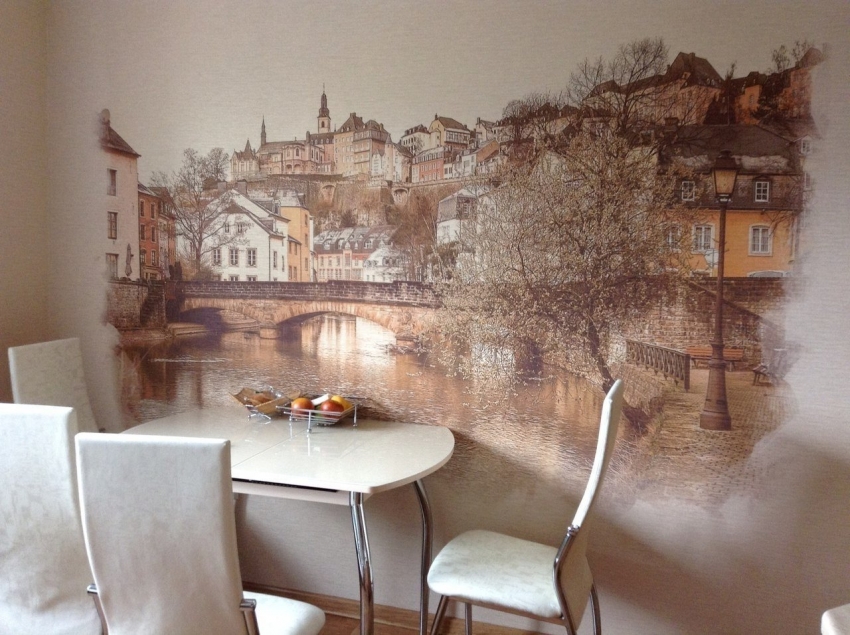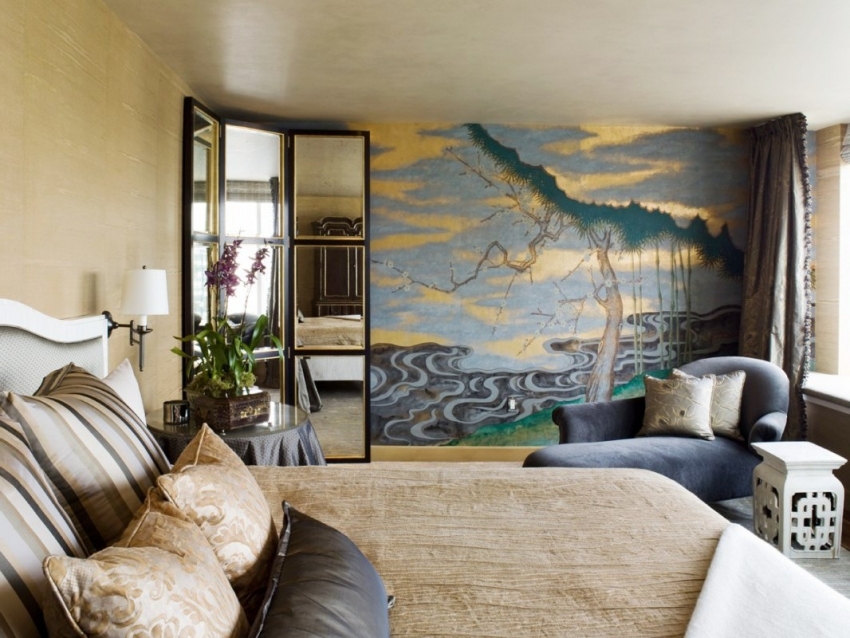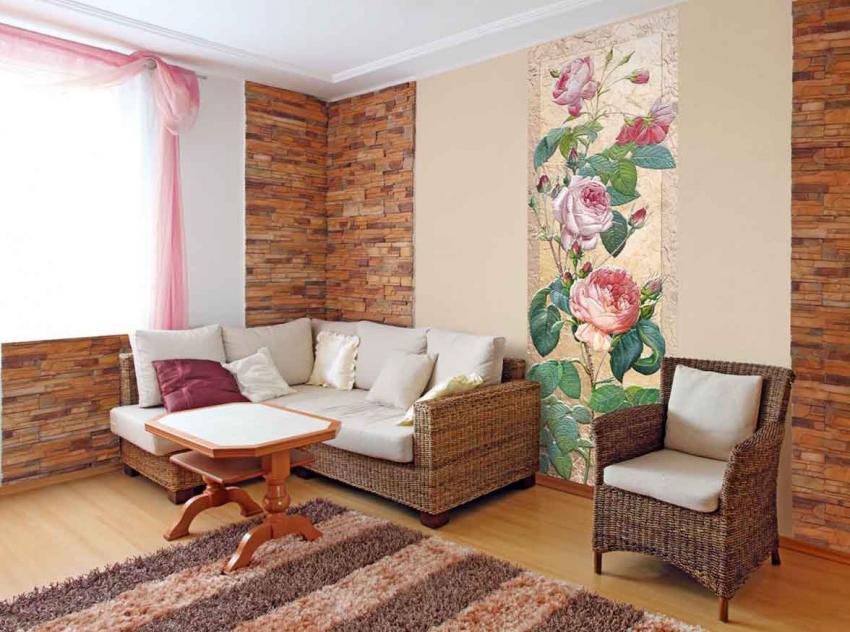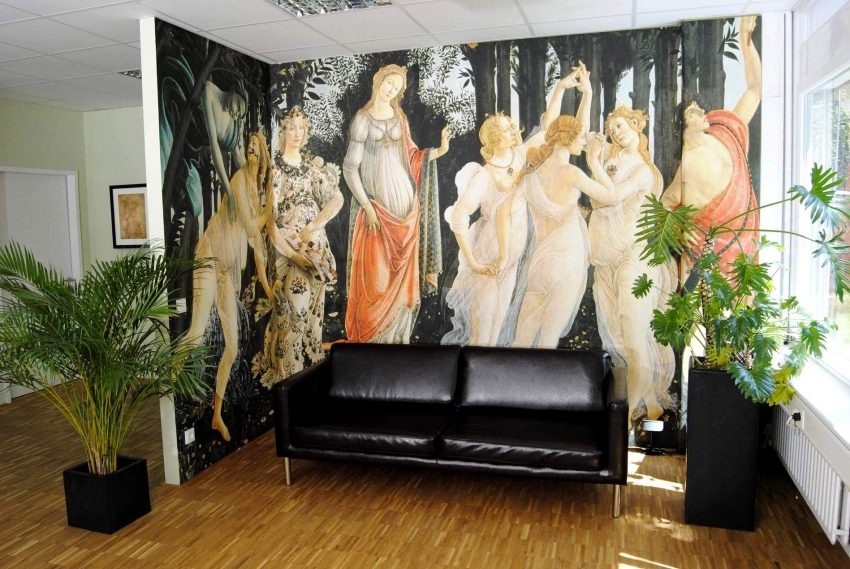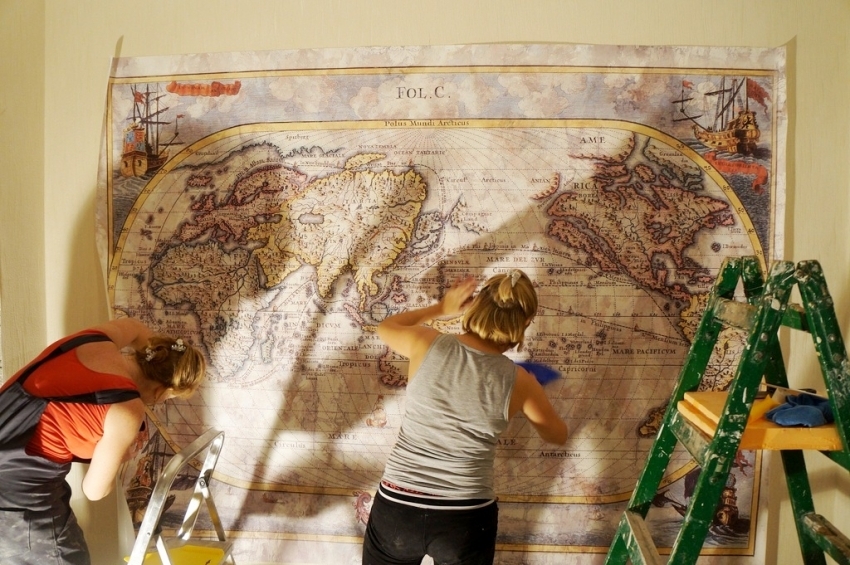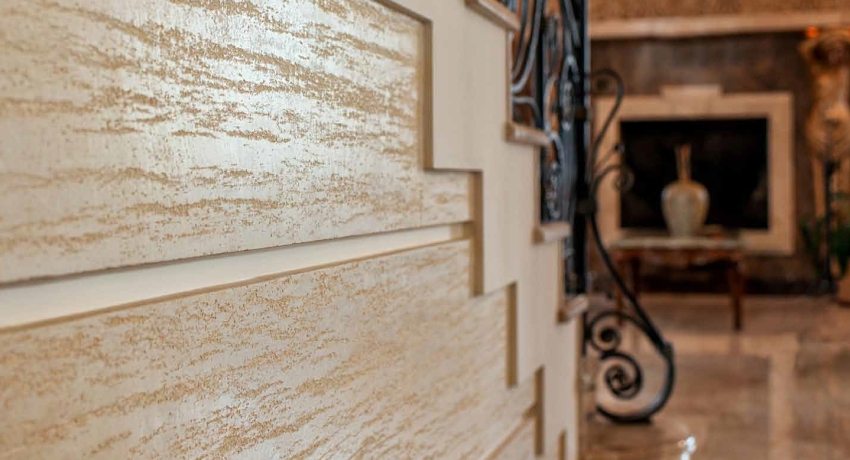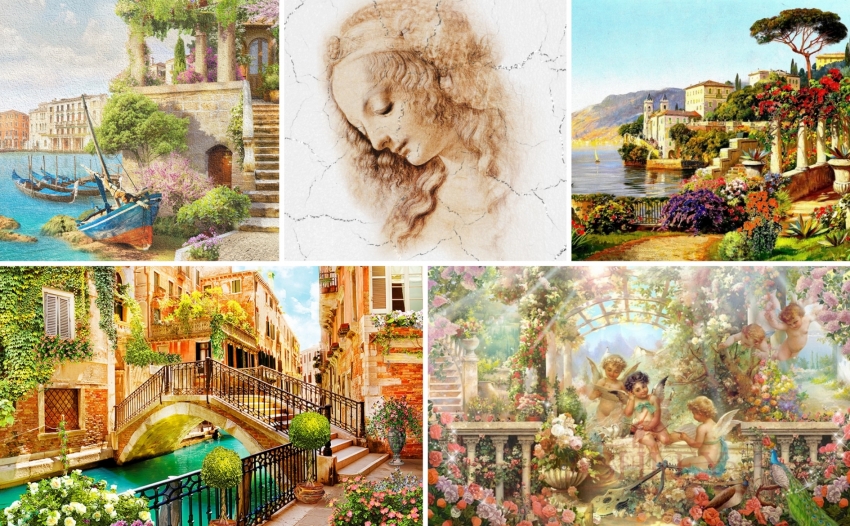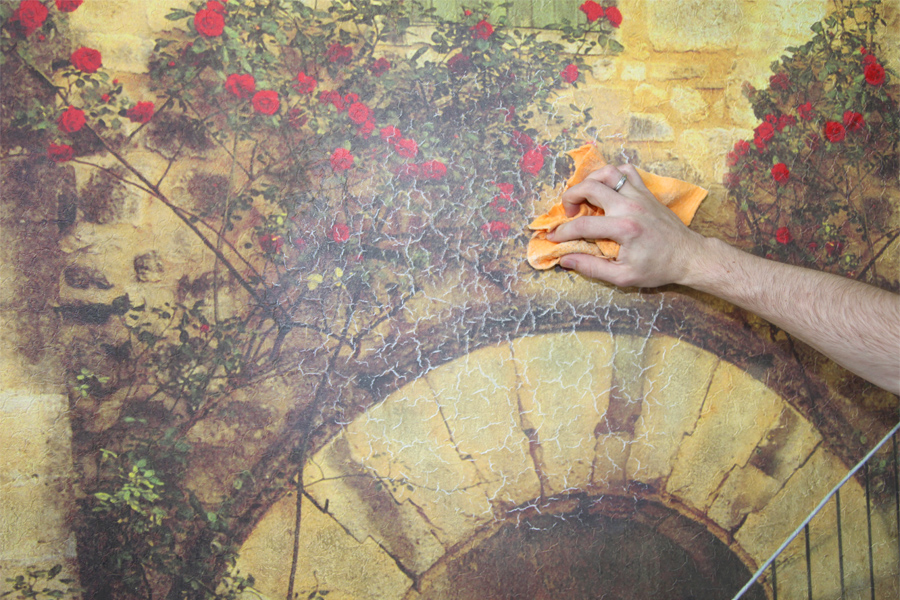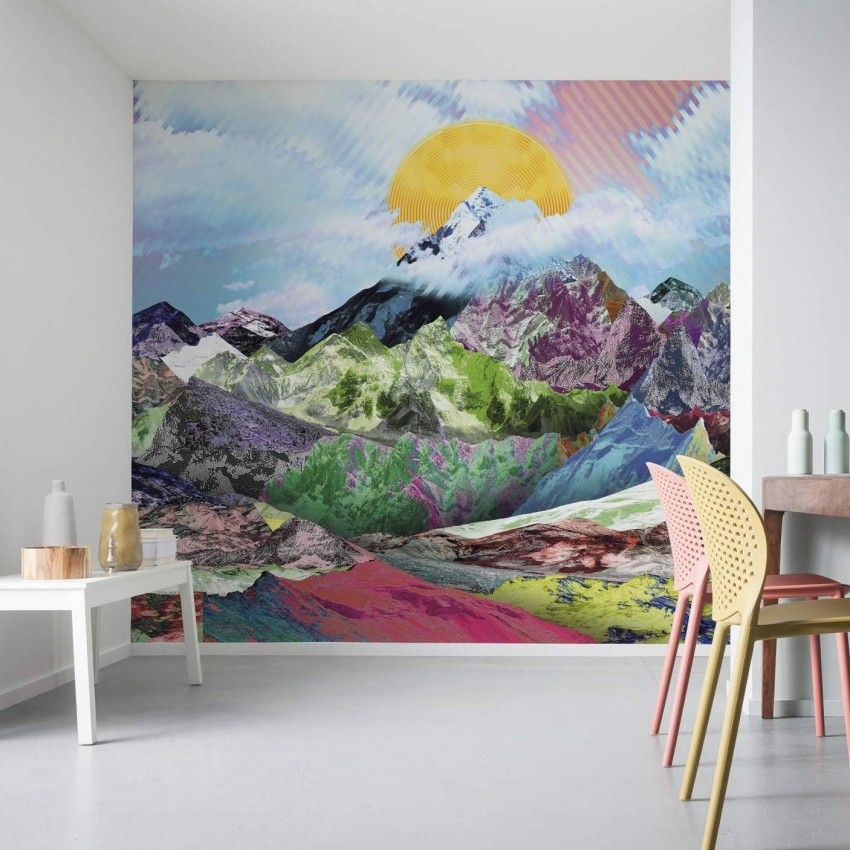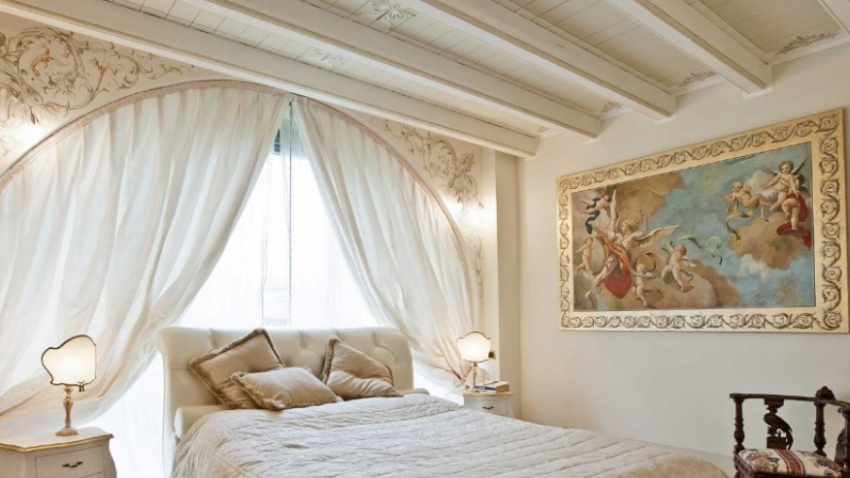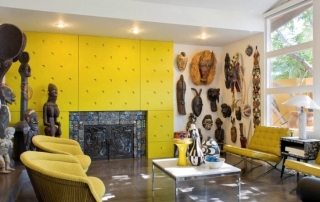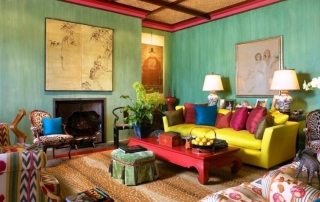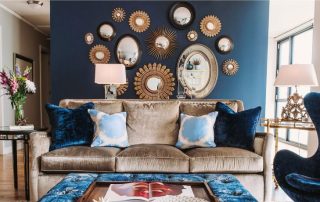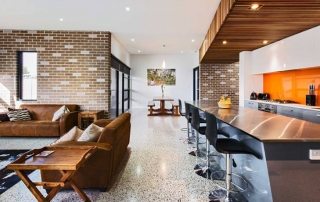Once a popular way to decorate walls with frescoes, it is now gaining popularity again. There are several types of such decoration, which at the same time expands and complicates the selection process. Consider what kind of frescoes on the wall are: photos, prices, catalog of the best ideas. In addition, we will pay attention to the technology of their independent production
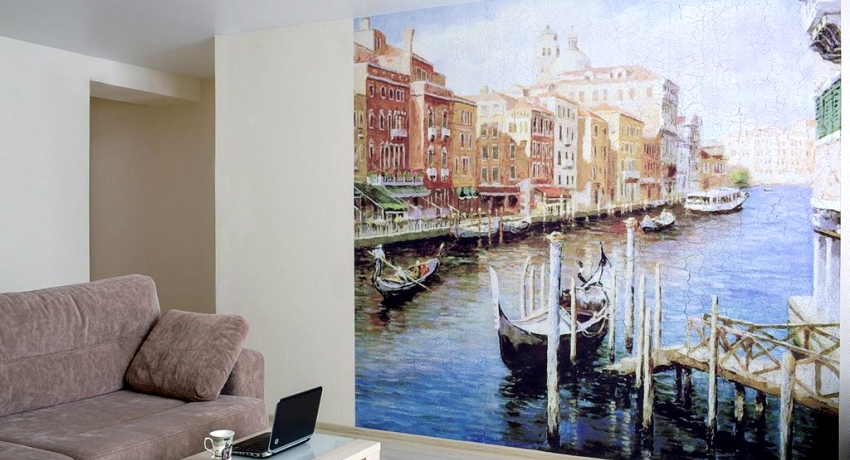
Frescoes in the interior are not just a stylish and original decoration of the house, but also a sign of the refined taste of the owner
Content [Hide]
- 1 What is a fresco on a wall: a catalog of examples and features of use
- 2 Rules for applying frescoes on the wall: photos and recommendations
- 3 Techniques for making frescoes on the wall: photos in the interior and application features
- 4 Frescoes on the wall: photos, prices, catalog of interesting ideas. Detailed description of all types
- 4.1 Fresco on canvas: advantages and disadvantages of a soft base for the image
- 4.2 How to glue a mural on a wall: a self-adhesive base for an image
- 4.3 Wallpaper for a fresco: drawing a pattern on a non-woven base
- 4.4 Wall murals on a rigid base
- 4.5 Frescoes on plaster: a technology for creating an expressive and sophisticated image
- 4.6 The most expensive murals on the wall: the price and features of creating a mosaic
- 4.7 What to look for when choosing a fresco: expert recommendations
What is a fresco on a wall: a catalog of examples and features of use
It is almost impossible to figure out what a fresco is without even briefly remembering the history of its origin. Indeed, today many people confuse frescoes with wall painting, although both can really be seen on the walls. The difference lies in the application technology, since the frescoes are made exclusively on fresh plaster and the paints used necessarily include natural pigments that make the drawing bright and rich.
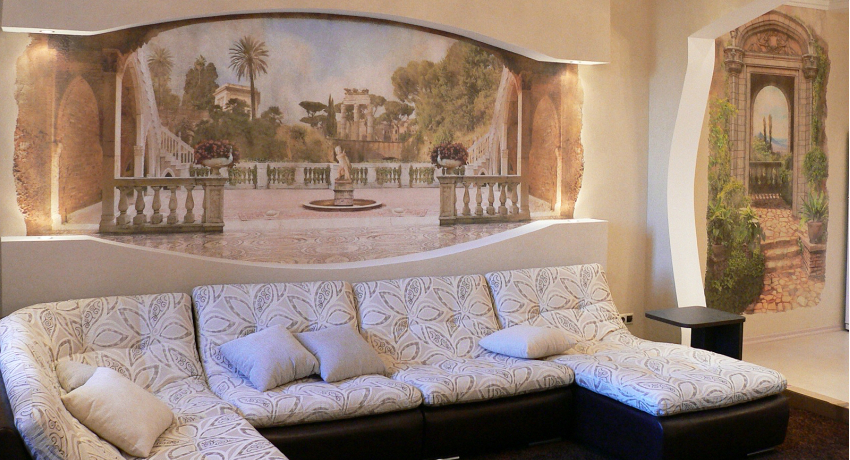
The use of frescoes allows you to beautifully decorate the walls and bring comfort to the interior of the house.
Sometimes a mural is done on canvas, which can later be fixed on the wall. This is very convenient, since it does not limit the possibilities of using the frescoes to one wall and allows, if desired, to move them to other rooms.
Once frescoes were used to decorate rich houses and palaces, but today they are increasingly used to decorate restaurants, hotels, etc. Although in recent years, such decorations can again be found in houses.
Useful advice! One of the aspects of the correct location of the fresco is the selection of a suitable place for lighting or the installation of artificial lamps. With the help of light, the image can be favorably emphasized, giving it a special charm.
Typically, frescoes are quite delicate and require careful handling and transportation.In order not to damage them, transportation is carried out in special tubes. Moreover, there are also restrictions on the air temperature in the room where they will be located. So, the fresco will feel comfortable in the temperature range from -10 to +35 degrees Celsius.
You also need to look after the image very carefully: the use of any solvents or other aggressive substances is strictly prohibited. For such products, it is advisable to carry out dry care, reducing their contact with water to a minimum.
What kind of mural to order on the wall: ideas for choosing an image
The most common option is to look at the catalog of frescoes and choose the option you like. In doing so, you can clarify whether you want the image to be exactly as suggested, or if you need to make some changes. For example, it is possible to add or vice versa, remove individual details of the picture or replace colors and shades. It is also possible to change the position of the picture to fit on the wall.
If you want to order a fresco with an original, unlike anything else, you can use your own photos from your trips. To do this, it is necessary to order a computer visualization in advance, and then, after approval, specialists will begin to create a fresco.
Rules for applying frescoes on the wall: photos and recommendations
Frescoes on the wall in the interior are an indicator of good taste and the ability to design your home in an unusual way. But the process of creating them is not easy, and it requires compliance with some rules. Consider what is needed in order to make a fresco, and what rules you need to adhere to:
- paints with natural pigments are applied to fresh plaster. Moreover, this must be done with a brush;
- before starting work, the pigments must be immersed in water. All work should be carried out as quickly as possible in order to prevent the plaster from drying out;
- the image on the fresco should be three-dimensional. And due to the fact that pigments are combined with small particles of plaster, the pattern will turn out to be very stable and, with careful handling, can retain its original appearance for many years;
- high-quality varnishing is a guarantee of the preservation of the fresco. The final layer is applied only after the drawing itself is completely dry.
One of the features of frescoes in comparison with other images that are used for wall decoration is the absence of a glossy surface. This avoids the appearance of glare and allows you to fully examine the drawing from any angle without any problems. What's more, custom work can take advantage of the bumps and bumps on the wall to create a variety of visual effects.
Techniques for making frescoes on the wall: photos in the interior and application features
If desired, it is quite possible to make a fresco on the wall without resorting to the help of professionals. It is only important to initially decide on the application technique and the materials that you plan to use. Let's take a closer look at all the existing options and their features:
- craquelure frescoes imply an artificial creation of the effect of antiquity. To do this, they even make special nets from cracks, adding marble chips to the paint. In this technique, both subject compositions and portraits recreated in the Empire style look great. But images on an abstract theme will be an excellent decoration for a high-tech interior;
- sand frescoes are applied to fine-grained plaster, which provides the image not only with an attractive appearance, but also increases its resistance to external factors. Still life or landscape images work best for this technique. And if you additionally remove the top layer of the sand fresco, you can end up with an unusual image with the effect of antiquity;
- frescoes on an elastic base are ideal if there is a need to arrange an uneven, rounded or angular surface. Usually, the space around the picture is additionally decorated with decorative plaster, which avoids the visibility of clear boundaries of the image and makes the fresco an organic part of the wall;

Sandy frescoes are considered the most exquisite and look beautiful in combination with expensive wooden furniture and golden decor elements
- frescoes made on canvas are a very expensive type, implying the use of only the best natural materials and handmade. Most often, cotton fabrics are used for this purpose. First, the image is applied to the plastered surface, and only then is it transferred to the canvas. Attach such frescoes to the wall using ordinary wallpaper glue;
- digital murals are another kind of completely finished images that you just need to place on the selected wall. It is very convenient that this option does not require leveling the surface, and the fresco can be fixed to any curved wall.
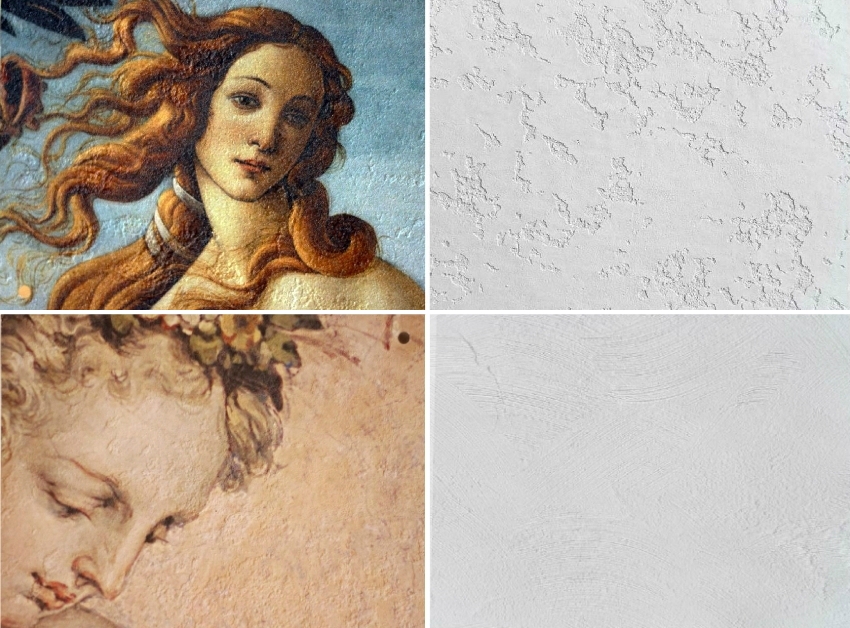
The texture of the fresco can be different and depends on the plaster used and the technique of its application.
The technology for making a digital type of frescoes looks like this: a thin layer of decorative plaster is laid on the non-woven fabric, and on top is a digital image. Due to the high quality of the images, outwardly such a fresco will not differ much from the real one, drawn by hand. But the range of such products is very large. Looking through the catalog, photos, prices of wall mural wallpaper, you can choose an option for any interior and budget.
Related article:
Decorative plaster for interior wall decoration and features of its application
Wall decoration in premises for various purposes. Classification of plasters, features of use in the interior. Application technologies.
Frescoes on the wall in the interior: a catalog of the best subjects for home decoration
Any of the above methods of creating murals can be used to decorate the interior. The main thing is to choose the right plot and image. For example, matching kitchen and bedroom murals will be completely different. As examples, you can see photos of frescoes in the interior of the kitchen, offered on forums and specialized sites.
Still lifes are best for the kitchen or hallway. In general, the image of flowers is a versatile option that can bring a cheerful mood and a festive atmosphere to any room. For spacious rooms decorated in a modern style, you can use a graffiti fresco.
Frescoes on the wall: photos, prices, catalog of interesting ideas. Detailed description of all types
Having briefly considered all the options for making frescoes, you can get a general idea of how exactly they are produced. But in order to make the right choice, this is not enough. Consider a photo of frescoes in the interior, the advantages of each option, and most importantly - the cost.
Fresco on canvas: advantages and disadvantages of a soft base for the image
Due to the fact that the production of one such fresco takes a very long time, there can be no question of the production of paintings on an industrial scale. In some cases, delicate handwork can take weeks or months. The cost of one such work is at least 30 thousand rubles.In addition, such a fresco cannot be purchased in our country, and most likely you will have to make an order from Spanish or Italian masters.
To obtain such complex, but incredibly beautiful frescoes, you need cotton canvas, lime, river sand, and natural adhesive mixtures and pigments for coloring. The plaster must be done by hand, and a drawing is neatly applied over it. Then, using a special technique, the image is aged.
When the image is completely ready, it remains only to move it to the canvas and cover it with a protective compound. When buying such a product, most likely you will receive it on a roll or less often in a stretcher. But this method has some disadvantages:
- it is absolutely impossible to wash such frescoes with water;
- it is necessary to regularly open the surface with wax to ensure the safety of the image;
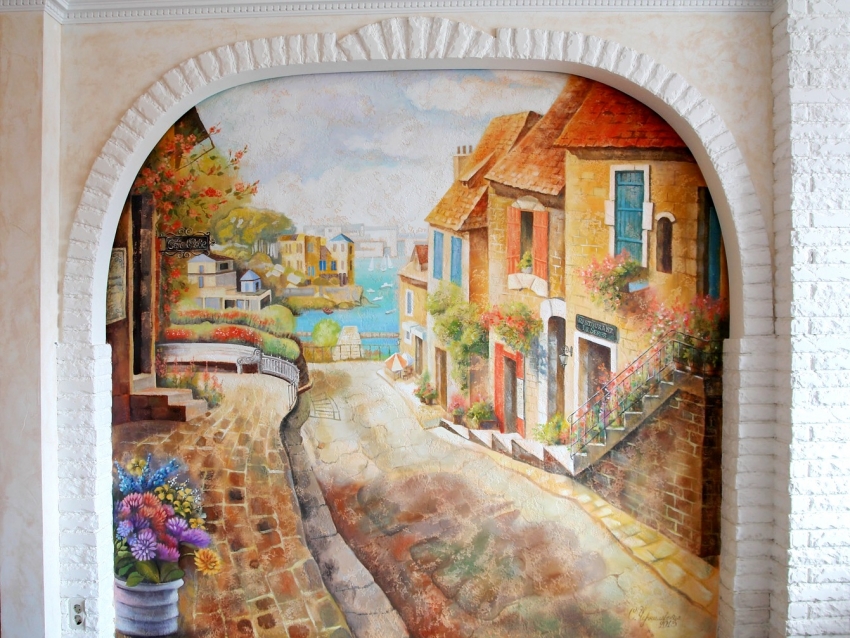
Thanks to the special technique of applying pigments to the plaster, the image appears three-dimensional and is clearly visible regardless of the viewing angle
- scratches and chips on such canvases appear very easily, so the attitude to the canvas should be especially careful.
Useful advice! This option is ideal for placement in the bedroom above the bed. Photos of frescoes of this type perfectly demonstrate their relevance for solving such interior tasks.
How to glue a mural on a wall: a self-adhesive base for an image
Thanks to the advent of the self-adhesive base for frescoes, the possibilities for their use have increased significantly. All complex places and even ceilings have also become possible to decorate with frescoes. But it is important to understand that due to the thin base, all the imperfections of the relief will be visible.
Another disadvantage of this solution is the impossibility to carry out the procedure of artificial aging of the surface. The layer is initially so thin that with any such impact, it will simply break.
The production of such frescoes is carried out according to the individual order of customers, but it is impossible to do this in our country. The technology provides for the use of a complex paste, which is prepared using special, very fine sand. This paste is applied over a synthetic material and a digital image is transferred over it.
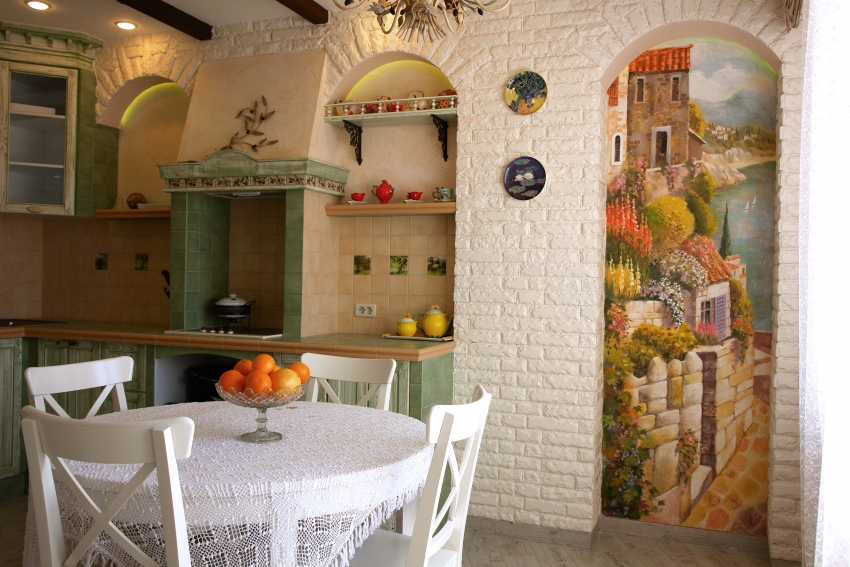
The catalog of frescoes from the well-known manufacturer "Applico" has thousands of images in a variety of styles
Useful advice! You can get an idea of the variety of images that can decorate your wall by looking at the range of Applico frescoes.
Wallpaper for a fresco: drawing a pattern on a non-woven base
Separately, it is worth noting such a product as wallpaper-murals on the wall, which, unlike several previous options, are quite simple to purchase. The manufacturing technology is very similar to that used for self-adhesive murals, only the design is slightly different.
If you want to buy a fresco on a non-woven basis, then it is important to know that there are two ways to transfer a picture to it:
- The image is transferred using modern digital technologies.
- Partial or complete drawing by hand. In some cases, the master can only finish individual details using the existing digital base. Of course, such frescoes look much more spectacular than any digital counterparts.
The cost of a fresco on a non-woven base in the size of 158 × 270 cm will be about 27,000 rubles, provided that it is made to order. But how much the additional modifications of the master will cost, you can find out only by contacting the company directly.
Useful advice!Often, companies involved in the production and sale of frescoes offer customers discounts on certain categories of goods. Thus, you can inexpensively buy a wall mural for the kitchen. Photos of promotional images can usually be seen in a separate section.
Wall murals on a rigid base
Frescoes on a rigid base are considered one of the most durable, and at the same time they look harmonious both in the design of the kitchen or corridor, and in the interior of the living room. Photos of frescoes of this type can often be found in small rooms, since the size of the image does not exceed 3x1.4 m. Therefore, if you want to decorate the wall of a large and spacious hall, the owners will have to give preference to a different application technique.
The price of a fresco is determined by the complexity of the drawing, as well as the number and complexity of the effects that are applied to the image after application. Most often, artificial cleavage is done at the edges, and the rest of it undergoes an aging procedure. There are two ways to attach such a fresco to the wall: by attaching it to freshly applied plaster, or simply by hanging it on the wall.
Frescoes on plaster: a technology for creating an expressive and sophisticated image
Ortho frescoes or, more simply, frescoes on plaster are one of the most popular and at the same time expensive options. To create it, you will need not only high-quality materials, but also the work of a professional who can decorate the wall properly, making the image durable and beautiful.
This technique involves the use of special Italian-made plaster, which is additionally reinforced with a net designed for painting. Natural pigments are used to create the image.
The whole process of creating this kind of frescoes takes several days (usually 2-3 days). At the same time, the impressive thickness of the product adds an antique effect, making the image even more expressive.
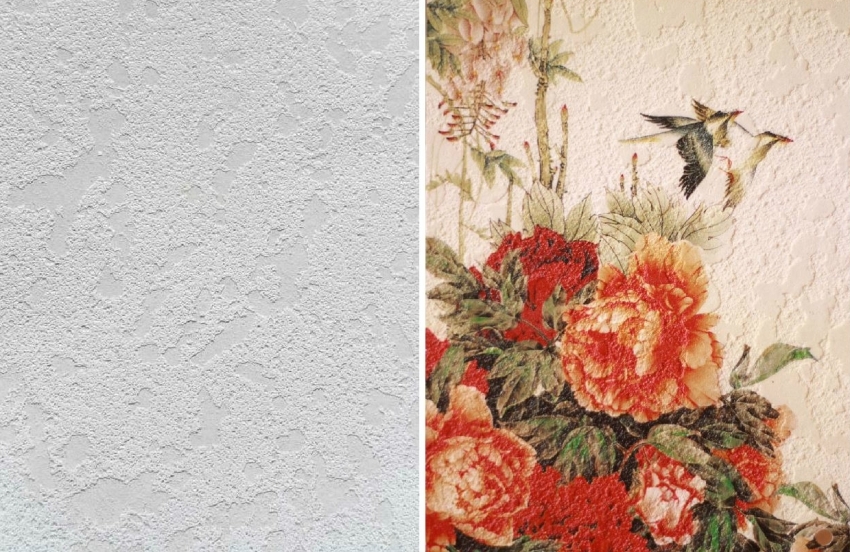
Fresco on plaster is one of the most affordable and elegant ways to decorate arches, walls or partitions
They are fixed with mounting glue, decorating the edges with decorative plaster, giving the fresco the effect of deepening in the wall. Images printed in this way are resistant to any impact. The cost starts from 6 thousand rubles and can increase depending on the size and complexity of the drawing.
The most expensive murals on the wall: the price and features of creating a mosaic
Mosaic is one of the most elite types of frescoes. The technology of creation is so complicated, and the work is painstaking, that in order to achieve the desired effect, you will definitely need to invite a qualified master, especially if you need to place the elements on fresh plaster. Another option is to make a separate panel, which can later be hung on special loops or attached to the wall in any other way.
Making a mosaic with your own hands is a difficult, but, in principle, feasible task. So if you prefer to spend a lot of effort instead of money, consider this option too.
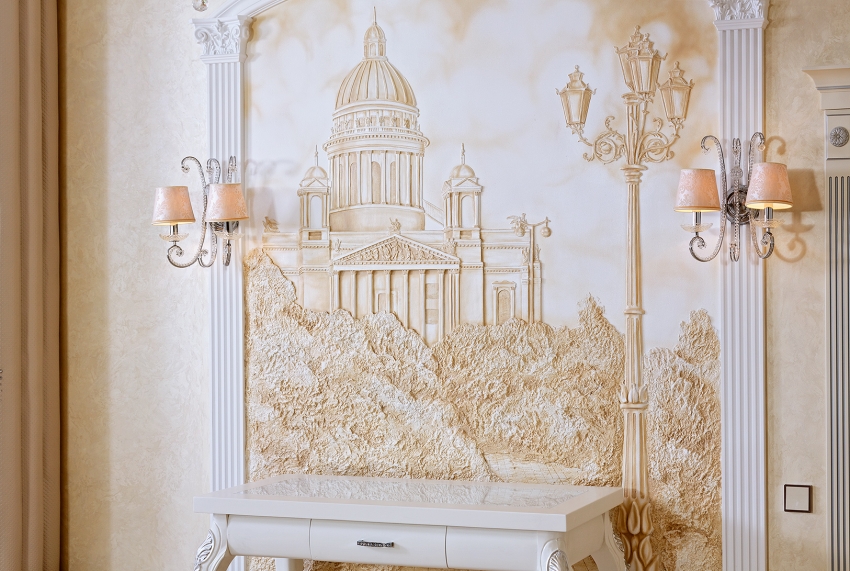
Handmade fresco is an expensive but very beautiful type of wall decoration that goes well with a classic interior
What to look for when choosing a fresco: expert recommendations
There are several main aspects that experts recommend paying attention to before making a purchase. First of all, it concerns the size of the image. When it comes to purchasing a finished fresco, then not only the size of the picture itself, but also the frame, if any, must be taken into account.
In addition, it is worth considering the size and color of the selected image in relation to the room in which you plan to place it.As the photos show, frescoes for a small kitchen should be light and not burdensome. Huge and ponderous images are acceptable only in very large and light rooms.
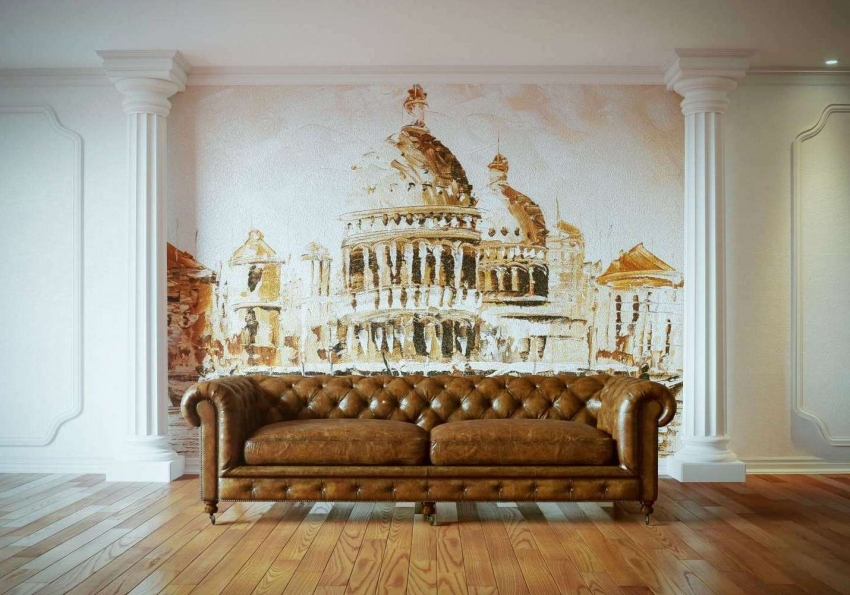
Since the mixing of styles is now in vogue, frescoes can be used in the design of any interior, but it is worth considering whether it will be combined with other decorative elements
Popular during the Renaissance, frescoes were once again recognized and used to decorate and decorate interiors. Today you can find a wide variety of options, including fairly cheap wall murals and very expensive mosaics.
